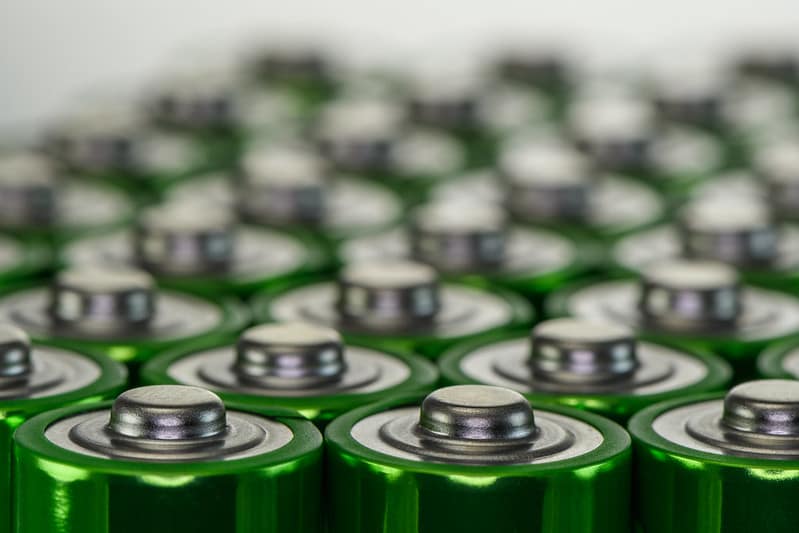
Powering the Future?
On October 9th, the 2019 Nobel Prize for Chemistry was awarded to John Goodenough, Stanley Whittingham and Akira Yoshino, for the development of the lithium-ion battery. As the Nobel Committee wrote in its press announcement:
“Lithium-ion batteries have revolutionized our lives since they first entered the market in 1991. They have laid the foundation of a wireless, fossil fuel-free society, and are of the greatest benefit to humankind.” [1]
Beside being an interesting case study in the nature of technological innovation, the development and subsequent success of the lithium-ion battery raises an interesting and important question for creativity researchers (like me): Is it possible that our belief in creativity and innovation is not just a solution, but also a problem?
The Fuel of the Future
Many of us have become highly dependent on lithium-ion batteries for our daily functioning; smartphones, tablets and laptops are only the most obvious examples. More importantly, however, lithium-ion batteries open up the possibility of large-scale storage of renewable energy, such as wind, solar, and hydro-powered energy. We could say that lithium-ion batteries are crucial to both the wireless lives that we lead and the fossil fuel-free lives we would like to lead in the (hopefully) near future. It is kind of ironic, then, that these batteries actually have their origins in the fossil fuel industry.
“Lithium-ion batteries are crucial to both the wireless lives that we lead and the fossil fuel-free lives we would like to lead in the near future.”
In 1972, Stanley Whittingham started working for Exxon[1] (an oil company that would later become known, among other things, for lobbying actively against climate change research and regulation[2]). The oil giant had come to realize that the age of fossil fuels would end some day, and was interested in exploring new possibilities to make money in the energy market. Researchers were hired, and were given free rein to study petroleum-free energy technologies, Whittingham among them. Eventually, after overcoming some minor issues like fires and explosions, Exxon began limited production of the first lithium-ion battery for a Swiss clockmaker (who, innovatively, was interested in creating solar-powered clocks and watches).
When oil prices plummeted because of the so-called ‘oil glut’ of the 1980s[3], oil companies felt compelled to tighten their budgets, and Exxon dropped the development and exploitation of the lithium-ion battery. Fortunately, the lithium-ion technology was picked up by John Goodenough at Oxford University, who managed to dramatically improve the power and capacity of these batteries.
Meanwhile, in Japan, electronics companies were beginning to churn out all sorts of novel consumer products, such as video cameras and early portable computers. These things needed power, and would need to carry their own power source if they were to be truly portable. Akira Yoshino saw the potential of the lithium-ion battery, and eventually managed to make the technology safe enough (no more explosions) and lightweight enough (watching home videos is no fun with a broken back) to become a viable option. The rest, as they say, is history.
“The lithium-ion battery is here, the future is upon us – time for a sustainable energy revolution!”
Now What?
So far, so cool. The lithium-ion battery is here, the future is upon us – time for a sustainable energy revolution! Unfortunately, things are not so simple. The Nobel committee may be right in pointing out that this technology has “laid the foundation of a wireless, fossil fuel-free society”, but we’re not that much closer to a fossil fuel-free world than we were in the 1970s or the 1990s. Instead, we’ve been steadily pumping more and more carbon dioxide into the atmosphere (that is, on a global scale – Europe isn’t doing so badly[4]). And although there are hopeful developments[5], things are moving very, very slowly, and not always in the right direction. Rechargeable batteries have the potential to help us break free from our addiction to oil and coal, but we mostly have used this potential for the production of new electronic gadgets and toys[6], all of which need to be powered somehow.
Beside ramping up (or at least maintaining) our hunger for electricity (most of which is still being produced in the old-fashioned way)[7], large-scale production of lithium-ion batteries in itself may not be good news for the environment either. Although we’re getting better at recycling, batteries and electronic devices still require extraction: raw materials are being mined more and more aggressively in order to satisfy the exploding demand. [8,9] Unfortunately, the mining industry is not exactly a clean one[10], and several key ingredients (like cobalt) are already becoming scarce.
Whittingham, Goodenough, and Yoshino are not to blame for this – their invention is fundamentally benign, and nowhere near as dark and dangerous as, say, Alfred Nobel’s dynamite. On the whole, rechargeable batteries are a really good idea and a great example of the potential of technological innovation. The Nobel Prize is well-deserved. But the proof of the innovative pudding ultimately lies in the way we use these innovations, and this is where, I believe, things may be going wrong.
Allow me to step away from the lithium-ion battery and do a bit of innovation-related soul-searching.
The Problem with Innovation
As I’ve argued in an earlier blog post[11], the essence of any creative idea consists of the possibilities it creates: creativity and innovation enable us to do things, and to fantasize about things, that were previously impossible or even inconceivable. Some of these may have to do with solving problems we already had, but many innovations actually break new ground and make us want to do (and buy) new stuff. New possibilities can be truly amazing and awesome, but there is a real risk that we only focus on exploring all the novel options and possibilities that we can find. This obsession with novelty in turn can easily blind us to the more boring things that still need to be dealt with somehow, or to the consequences of our race towards the next marketable innovation. In a blog on innovation and maintenance, Andrew Russell [12] remarks that people “would rather dream about smart cities than throw money into stupid potholes.” In other words, we are so fascinated with the new and shiny that we tend to neglect the old and grimy. Problems are not fun; new opportunities are.
“We are so fascinated with the new and shiny that we tend to neglect the old and grimy.”
But wait; isn’t innovation important and valuable? After all, look around you – none of the buildings, tools, or artefacts that you see would be here if it weren’t for innovation. In fact, many of the people you see, including yourself, probably wouldn’t be here if we hadn’t come up with new and better ways of producing food, shelter, sanitation, and medicine. This is all true: innovation has brought us a lot, and without it we would still be living in caves – or possibly not even that. But precisely because innovation is so inextricably linked to our existence and lifestyle, it deserves to be taken seriously, and this includes some critical notes.
Research on creativity and innovation mostly teaches us how to stimulate novelty, both in the way we generate ideas and the way we respond to them[13]. It’s all about helping people and organizations find those game-changing ideas. But perhaps we should start asking ourselves which –or whose– interests are being served here. In a recent article, Khessina, Goncalo, and Krause[14] point out that there is a pervasive tendency among researchers and their audience to see creativity and innovation as inherently positive forces, but that they have serious costs as well. Not only do creative ideas often lead to resistance and even conflict, the disinhibition associated with high creativity also predicts all sorts of undesirable behaviors and outcomes, such as dishonesty, self-absorption, and substance abuse. Similarly, while innovation may be valuable for organizations (although even that remains to be seen[15]), it can lead to unexpected costs for the organization, the ecosystem it operates in, and its clients.
“Innovation has brought us a lot, and without it we would still be living in caves – or possibly not even that.”
The Disinhibited Society
Although Khessina et al.[14] use their term creative disinhibition to describe individual-level processes, I think it also characterizes something about our collective attitude, as a society of consumers, towards innovation. We are so taken with exploring new opportunities and exciting possibilities that we forget about solving old and boring problems – or rather, we believe that any old problem can be solved by introducing something new and amazing. We’d rather dream of solar-powered airplanes and ships than refrain from traveling and shipping stuff all over the world; we’d rather drain and recharge batteries than tone down our energy consumption. Innovation researchers, meanwhile, routinely frame the importance of their research by pointing out the competitive value of discovering new niches in the market. But surely there is –must be– more to innovation than increasing market shares and stimulating consumerism.
There is a paradox here that screams for resolution. It is a truism that the positive and negative consequences of any innovation largely depend on the decisions made by consumers, who are all too easily seduced by shiny new toys. The value of innovation lies in the possibilities it creates, but –ironically– making the best use of these possibilities may require some hard decisions from all of us about what not to do and which possibilities not to explore. Not a particularly easy thing to sell, if the alternative is getting a brand new iPhone or Tesla!
References
[1] Royal Swedish Academy of Sciences (2019). They developed the world’s most powerful battery. Retrieved from: https://www.nobelprize.org/uploads/2019/10/popular-chemistryprize2019.pdf
[2] Wikipedia: ExxonMobil climate change controversy. Retrieved from: https://en.wikipedia.org/wiki/ExxonMobil_climate_change_controversy
[3] Wikipedia: 1980s oil glut. Retrieved from: https://en.wikipedia.org/wiki/1980s_oil_glut
[4] Wikipedia: List of countries by carbon dioxide emissions. Retrieved from: https://en.wikipedia.org/wiki/List_of_countries_by_carbon_dioxide_emissions
[5] Woerdman, E. (2019). Energietransitie en klimaatbeleid: tussen marktwerking en overregulering (Energy Transition and Climate Policy: Between Market Formation and Overregulation). University of Groningen, inaugural lecture. Retrieved from https://papers.ssrn.com/sol3/papers.cfm?abstract_id=3361527
[6] Lithium-ion batteries – Statistics and facts. Retrieved from https://www.statista.com/topics/2049/lithium-ion-battery-industry/
[7] Wikipedia: World energy consumption. Retrieved from https://en.wikipedia.org/wiki/World_energy_consumption
[8] Katwala, A. (2018) The spiraling environmental cost of our lithium battery addiction. WIRED Magazine, August 2018. Retrieved from https://www.wired.co.uk/article/lithium-batteries-environment-impact
[9] Merchant, E. M. (2017). Lithium-ion battery production is surging, but at what cost? Retrieved from: https://www.greentechmedia.com/articles/read/lithium-ion-battery-production-is-surging-but-at-what-cost
[10] Wikipedia: Environmental impact of mining. Retrieved from https://en.wikipedia.org/wiki/Environmental_impact_of_mining
[11] Rietzschel, E. F. (2017). The creativity of covfefe. Mindwise blog. Retrieved from: https://mindwise-groningen.nl/the-creativity-of-covfefe/
[12] Russell, A. (2015). Nothing special: Standards, infrastructure, and maintenance in the great age of American innovation. Retrieved from: http://blog.castac.org/2015/04/nothing-special/
[13] Rietzschel, E. F., & Ritter, S. M. (2018). Moving from creativity to innovation. In R. Reiter-Palmon, V. L. Kennel, & J. C. Kaufman (Eds.), Individual creativity in the workplace (pp. 3–34). San Diego, CA: Elsevier Academic Press.
[14] Khessina, O. M., Goncalo, J. A., & Krause, V. (2018). It’s time to sober up: The direct costs, side effects and long-term consequences of creativity and innovation. Research in Organizational Behavior, 38, 107-135.
[15] Gilson, L. L. (2008). Why be creative: A review of the practical outcomes associated with creativity at the individual, group, and organizational levels. In J. Zhou & C. E. Shalley (Eds.), Handbook of organizational creativity, pp. 303-322. New York, US: Lawrence Erlbaum Associates.
Image credit: photo by Peter Miller (licensed under Creative Commons)



